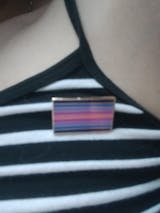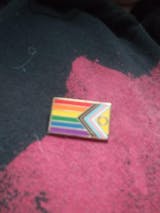Homoflexible is a sexual orientation where someone is primarily attracted to people of the same gender but experiences occasional or situational attraction to people of a different gender. It's often described as "mostly gay" or "mostly lesbian".
Here's a breakdown of the key aspects:
-
Primarily Homosexual: The core of homoflexibility is a strong and consistent attraction to individuals of the same gender. This forms the majority of their attractions and relationships.
-
Flexibility Towards Different-Gender Attraction: Unlike someone who is exclusively homosexual, a homoflexible person experiences some level of attraction to people of a different gender. This attraction might be infrequent, less intense, or occur only under specific circumstances.
-
Spectrum of Experience: Homoflexibility exists on a spectrum. For some, it might involve a rare passing thought or a single experience. For others, it could mean occasional but genuine attraction and even acting on those feelings.
-
Not Necessarily Bisexual: While homoflexibility involves attraction to more than one gender, individuals who identify as homoflexible often feel that "bisexual" doesn't fully capture their experience. This could be due to the intensity or frequency of their different-gender attraction or a stronger identification with homosexuality.
Examples of Homoflexibility:
- A gay man who is primarily attracted to men but occasionally finds a woman attractive.
- A lesbian woman in a long-term same-gender relationship who has a one-time sexual experience with a man that she enjoys.
- Someone who mostly dates the same gender but is open to the possibility of a different-gender romantic or sexual encounter under specific circumstances.
- A person who identifies as gay or lesbian but has had a few different-gender crushes or sexual fantasies.
Homoflexible vs. Bisexual:
While both terms describe attraction to more than one gender, the emphasis differs:
-
Bisexual: Generally implies a more significant and often more consistent attraction to more than one gender. Bisexuality is a broad term, and the degree of attraction to different genders can vary greatly.
-
Homoflexible: Highlights the primarily homosexual nature of the attraction, with different-gender attraction being less frequent or less intense. Some people use this term because they feel their attraction to a different gender is not strong or frequent enough to warrant identifying as bisexual. Others might prefer it because they feel a stronger connection to their homosexual identity.
Important Considerations:
-
Self-Identification: Ultimately, the label someone chooses is a personal one. If "homoflexible" feels like the most accurate descriptor for their experience, that is valid.
-
Fluidity: Sexuality can be fluid, and someone's identification might change over time.
-
Potential for Bi-Erasure: Similar to "heteroflexible", some members of the LGBTQ+ community express concern that the term "homoflexible" can contribute to the erasure of bisexuality by suggesting that some forms of attraction to more than one gender are "less valid" or just a temporary deviation from homosexuality. However, many individuals find the term accurately reflects their unique experience.



